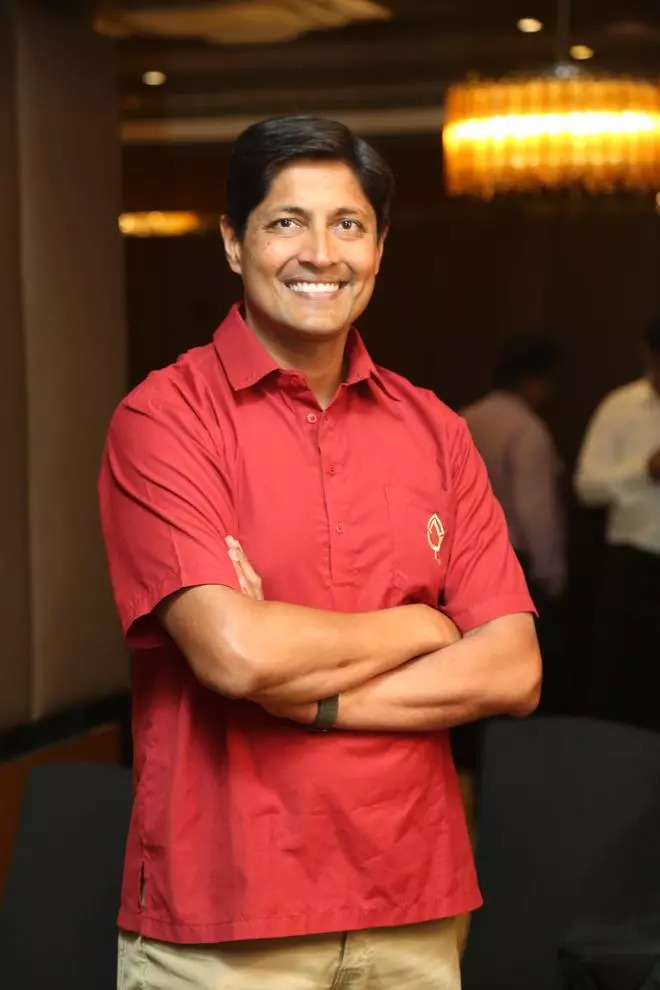Ayodhya-based Pakka Limited, which creates sustainable packaging material using agri residues, is setting up a unit in Guatemala to produce 400 tonnes of compostable packaging materials every day, Pakka Group CEO Ved Krishna said.
The company will spend more on research and development (R&D) and shift its Bengaluru R&D Centre to Portland in the US. It is committed to spending about $5 million in R&D this year, including capital and operational expenditures, Krishna told businessline in an online interaction.
“We were getting a lot of inquiries from the North American market. So the idea became let’s find a place near there where we can find sugarcane. So I went on a wild horse chase to Mexico, Belize, Colombia, Peru, Ecuador, and Brazil. Eventually, I foundGuatemala, which has big sugar companies, a very stable economy and currency,” he said.

Pakka Group CEO Ved Krishna
World’s largest unit
Sailing from Guatemala to either coast of the US takes 4-5 days and its products can be exported at zero duty because of the Central American Free Trade Agreement. This made Pakka decide that the Central American country was the right place to build a plant.
“We have finalised the land and have started to construct the boundary. We have finalised the basic engineering and detailed engineering will begin and raising of funds has started,” the company’s CEO said.
The unit will be the largest compostable packaging one in the world and will go on stream by the end of 2026 or early 2027. Pakka put in the seed capital of $10-12 million to buy the land and put a team in place for the $340 million project.
It plans to raise $200 million through debt and some of the development finance corporations have shown interest. “We need to raise $130 million in equity. Sugar companies which are providing bagasse to use have shown interest. Strategic partners too have shown interest,” said Krishna.
Needing innovations
Besides, some of the company’s customers want to buy a part of the equity. “We are at a stage where we are just de-risking the project. We hope we will be able to finalise the investors in March. We want to minimise the dilution to about 30-40 per cent,” the company’s CEO said.
Pakka is currently in the middle of shifting its R&D centre to the US. “Portland is going to be our global product development hub. We divide the R&D department into two. Product innovation and process innovation,” he said.
The company, which was launched by his father in 1981 after his grandfather shifted their sugar mill from Kanpur to Ayodhya in 1948, uses a lot of in-house materials and therefore, needs both innovations. The company is finalising its plans and is looking for a “global figure” who understands material sciences and can help produce new products.
Pakka Group, which uses 70-80 per cent bagasse to make its packaging materials, provides disposable products to companies such as Haldirams, Lite Bite Foods and other institutional caterers. McDonalds, Dominos, Taco Bell and Subway are also its customers. “Taco Bell is becoming a very big customer of ours now. We are in talks with those in the quick-service restaurant (QSR) firms,” he said.
Transforming food service
Pakka is trying to transform food service and packaging through regenerative packaging. Its Chuk brand is one of the leading ones in the country. It has now come up with new chocolate packaging and has begun to work with firms such as Mars, Nestle, Britannia and Unilever.
One of the problems with biscuits, chips, chocolate and other food items packaging is that they have plastic substrates that may not go way for even over 1,000 years. It is a complex issue since it is designed to ensure the food tastes fresh. “The whole idea is how to make packaging natural. We have finally cracked the code and begun commercialising it,” said Krishna, adding that the company is investing heavily in the new packaging in Ayodhya and also in the unit to be set up in Guatemala.
The company’s fundamental focus is on food packaging and within that, flexible packaging. The problem with packaging is that it involves multiple layers of polythene and then a layer of aluminium. A heat-sealable layer is created and this is not even picked by rag pickers. This has no economic value but remains in the environment for years.
“So if you take a McDonald’s wrapper and a bag, that will be the core substrate of food wrapping and packaging. So that’s something that still brings in 70-80 per cent of our revenue and that is slowly shifting towards food services,” said Krishna.
Recyclable substrate
The new packaging product has begun to grow from a meagre share currently and is expected to be a bigger part of the business in a couple of years. “It will become 60-70 per cent. That’s why we are investing heavily both in India and abroad,” he said.
Pakka has now created a recyclable substrate – 70-80 per cent of it can be collected compared to 7-8 per cent of the poly packaging. This can also be composted. If it is not collected, it will disintegrate and turn beneficial to the planet.
“It is the biggest focus for us for the next 4-5 years. We are also moving into rigid packaging, but the focus is smaller right now. Rigid packaging is for ready-to-eat meals such as noodles or frozen foods,” Krishna said.
Besides baggase, Pakka uses different biomaterials such as nanocellulose, which is refined cellulose. It uses another biomaterial called polyhydroxyl alkynesm which is a microbe-based polymer. “These are the two big materials that we are working with,” he said.
Growth target
The company’s CEO, who took over in 2005, said Pakka almost went bankrupt but the goodwill it created among its suppliers helped it recover. While suppliers gave their products and asked the company to pay later, some buyers paid upfront and asked to supply later.
It was during this time that the company began to look at making sustainable packaging materials. Today, a major part of Pakka’s revenue comes from wrapping and bag kind of products for food.
The company has targeted 20X growth over the next 4-5 years by 2029-30. The confidence in the growth comes from the 4x growth expected in the Ayodhya plant from the new products that will be produced from October-November this year.









Leave a Comment